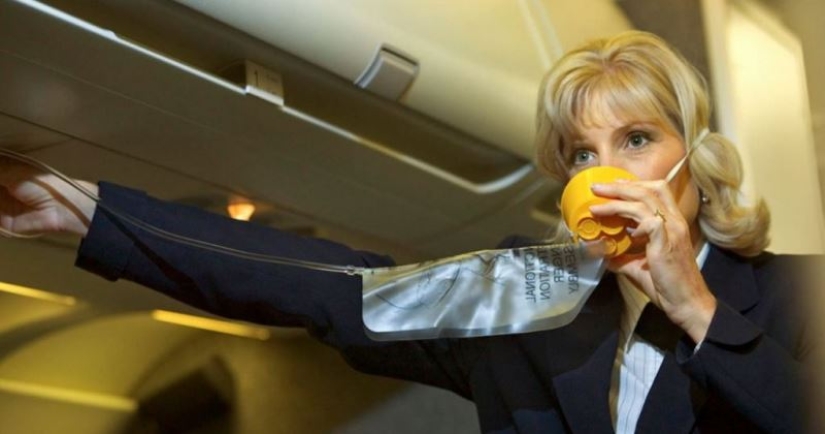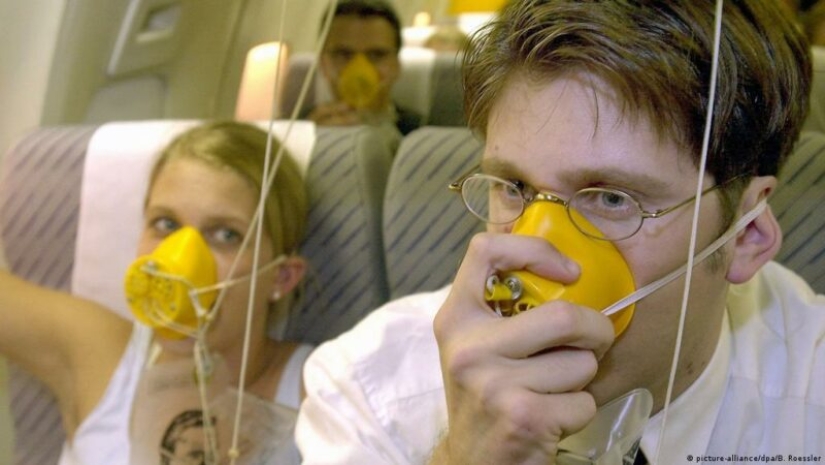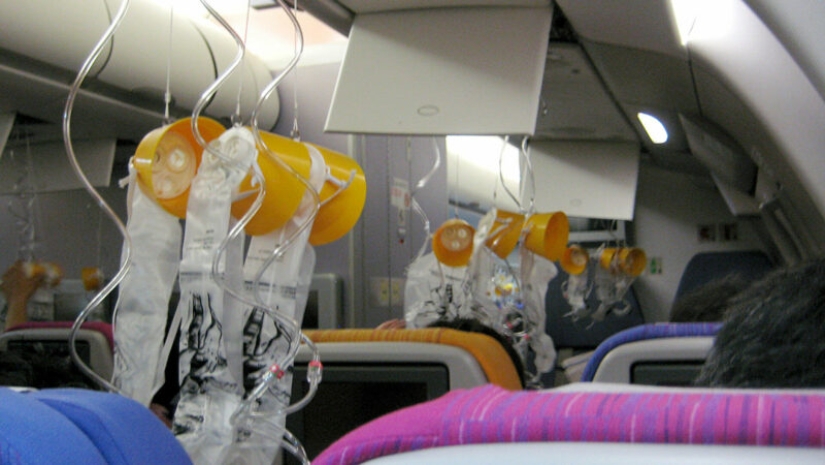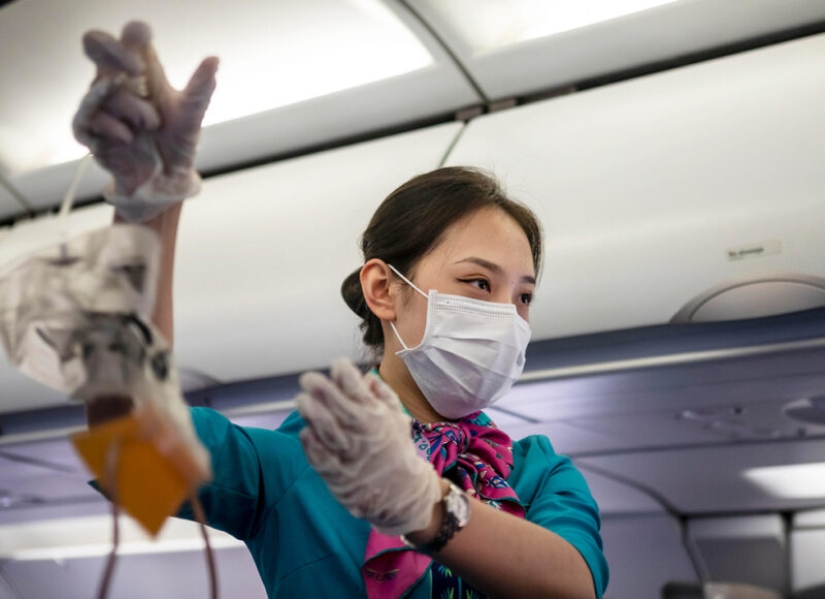How oxygen masks work in airplanes and why there is no oxygen in them
Categories: Technology
By Pictolic https://pictolic.com/article/how-oxygen-masks-work-in-airplanes-and-why-there-is-no-oxygen-in-them.htmlEveryone who has flown on passenger liners at least once knows that there are oxygen masks above the seats, which themselves fall out of niches in emergency situations. This is told before each flight by flight attendants and it can be seen in the schematic pictures in the liners. But few people know that oxygen masks are not connected to oxygen tanks and save the lives of passengers using a completely different principle.

An unexpected blow, shaking, flashing lights, the sound of a siren and oxygen masks falling directly from the ceiling - this is how air accidents are depicted in Hollywood films. It is quite logical to assume that somewhere in the bowels of the airliner there are oxygen cylinders connected to these very masks. But everything is much simpler, safer and more efficient.

From the school bench, everyone knows that with increasing altitude, the pressure decreases. Already upon reaching the mark of 4 thousand meters, the air is so thin that it becomes very difficult to breathe, and for people with poor health it is impossible at all. Therefore, when the cabin of the aircraft is depressurized at an altitude of 4 km and above, the equipment that throws out breathing masks automatically triggers.
There are always more masks than chairs in a row, at least one. This is due to the fact that the designers provide that during an emergency, passengers or crew members may be in the aisles, who also need to be supplied with oxygen. But the resourcefulness of the engineers responsible for flight safety does not end there.

It turns out that there are no oxygen cylinders on the plane. In order to provide 200-300 passengers with life-giving gas, they would have to take significant gas reserves with them on the flight. This would increase the take-off weight of the liner, reduce the payload and increase fuel consumption. Needless to say, dozens of oxygen cylinders are a source of increased danger.
Therefore, a simple but elegant solution was invented – oxygen for masks is produced, as they say, "in place", that is, at the moment when it becomes necessary. The gas is released during a simple chemical reaction and it happens right over the passenger's heads. Everything you need to generate oxygen is located next to the mask and when the system is triggered, the reagents immediately begin to mix.

Those who faced emergency situations in airplanes noted the smell of burning, appearing simultaneously with the loss of masks. Many people start to panic even more because of it, but it's not worth doing this, because this smell is just a side effect of a chemical reaction, and not a sign of a fire.
It remains to add that the probability of using an oxygen mask due to an emergency situation is negligible, since air transport is still the safest in the world and it is much more dangerous to walk down the street on foot than to make a transatlantic flight.
Keywords: Plane crash | Plane | Liner | Aviation | Technology | Chemicals | Oxygen
Post News ArticleRecent articles

The Himalayas. Tibet. Something cosmic and ethereal sounds in the names. They attract visitors from all over the world. In front of ...

The early 20th century coincided with an increase in incidents of tiger attacks on humans in many regions of India. But among the ...
Related articles

Racehorses travel all over the world to participate in horse racing. Have you ever wondered how they are transported? Thoroughbred ...

Can you tell what snakes, ninja shurikens, eels and grenades have in common? It's simple — all this is periodically seized ...

On November 29, 1987, a South Korean airliner en route from Vienna-Baghdad-Abu Dhabi-Seoul disappeared from radar in the Andaman ...

What role can a dog play in raising a child? Some parents do not allow such an idea at all, while others know how amazingly a ...